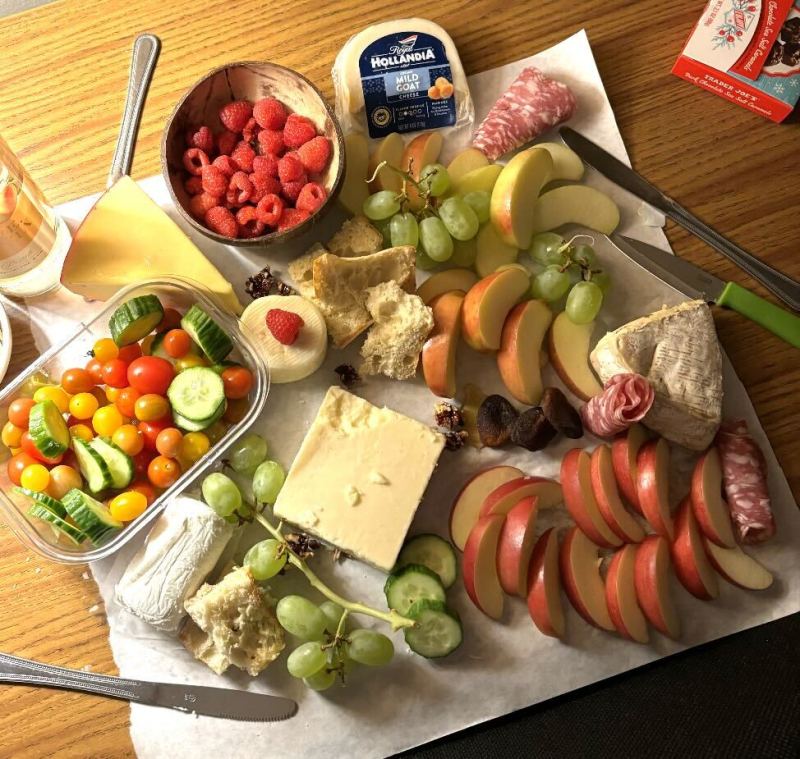From comfort classics served at Stanford like paneer to TikTok favorites like feta, cheese is a tasty snack and “grate” addition to any meal. Stanford experts and students weigh in on the dairy staple.
“I fell for cheese the way some people fall for wine,” Andy Switky ’86, lecturer in the mechanical engineering department and cheesemaker, wrote in an email to The Daily.
“I boil cheesemaking down to four things: milk, cultures (which I buy online), rennet (a coagulant) and salt,” Switky wrote. According to Switky, cheese types emerge with “varying temperatures, times, stirring, cultures, format and aging.”
Some students consider cheese to be a culinary Jack-of-all-trades.
“Cheese is one of the ingredients that just makes food so much better,” Alexis Hernandez ’26 said. “From nachos to pasta, I think that most things benefit from a hint of queso!”
Jessica Little and her husband, Jeremy Little, own Sweet Grass Dairy in Thomasville, Georgia. Founded by Jessica Little’s mother, the dairy creates a diverse range of cheeses including their own spin on blue cheese, Asher Blue and pimento cheese, a Southern special.
Little described the cheesemaking process: First, milk is heated to a certain temperature depending on which cheese is being made, then starter cultures are added. Next, rennet is added to bind the proteins and fats together, forming the curd which gets separated from the liquid whey. The curds undergo some combination of salting, brining, aging and shaping in molds. Little likened cheese’s ripening or maturation process to an “awkward teenager phase.”
However, cheesemaking is low on physical returns. “If you have ten pounds of milk, you will get one pound of cheese,” Little said.
But there’s no use crying over spilled milk. According to Little, the other 90% is whey, which may be sold to processing plants to make protein powder and other goods. Since there is no such facility near Sweet Grass Dairy, the creamery diverts the whey for fertilizer or pig chow.
Two of Switky’s favorite cheese concoctions were made by chance. “I made a blue cheese that got contaminated with a red bacterium but the result was a weird gorgonzola and muenster monster my wife dubbed The Gorgster,” he wrote. According to Switky, he also created a cheese he calls “Paprikam,” which is smoked paprika sandwiched between two layers of camembert.
Liz Thorpe, an author who has written books about cheese, taught a seven-week course about cheese for Stanford’s Continuing Studies Department. Apart from history and science, Thorpe teaches students the cheese-tasting process, which includes tasting with both the eyes and mouth.
Thorpe said that the “United States is considered the holy grail of the world market for cheese.” She added that mozzarella, cheddar and American-made parmesan occupy the highest volume of cheese consumption in the United States.
According to Thorpe, the United States also churns out the most cheese in the world, with production hotspots being California and Wisconsin. In fact, the latter’s residents are nicknamed “Cheeseheads.”
Thorpe explained that cheese can be labeled as “artisanal,” such as Switky’s or Little’s cheeses, or “commodity,” like the shredded cheese on a cheap pizza. According to Little, challenges in artisanal cheese production include sustainability and recreating cheeses with novel recipes. Cheesemaking can be a sensitive process. The flavor can vary dramatically depending on tweaks in factors like milk heating temperature, mold acidity and the cows’ diet and lactation cycle. To limit greenhouse gas emissions, Sweet Grass Dairy employs a New Zealand rotational grazing method.
“Cheese is a huge, nutrient-dense motherload of a food,” Thorpe said. Cheese served as a protein source for people unable to afford meat in medieval Europe. In fact, cheese even served a stint as currency in medieval Britain, according to Thorpe. Serfs could pay tithes to manor lords in cheese. In medieval Denmark, cheese was handed over to the church and the kingdom’s big cheese, the monarch himself, as tax payments.
Sam Jonker ’27 savors a cheese that many may turn their noses up at: blue cheese.
“There’s just something about the funky yet creamy taste that always hits the spot,” Jonker said. “It doesn’t matter how you eat cheese, though. It always tastes great.”
